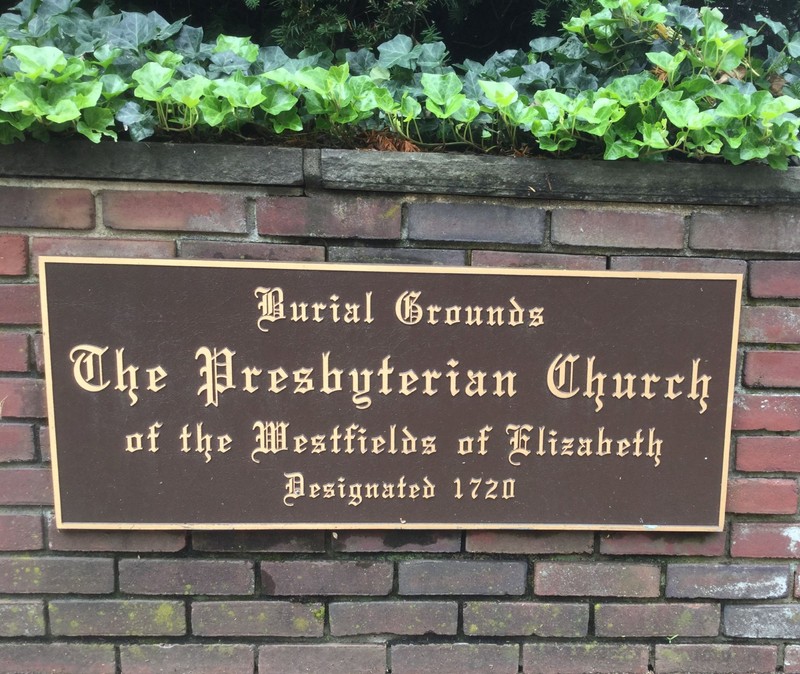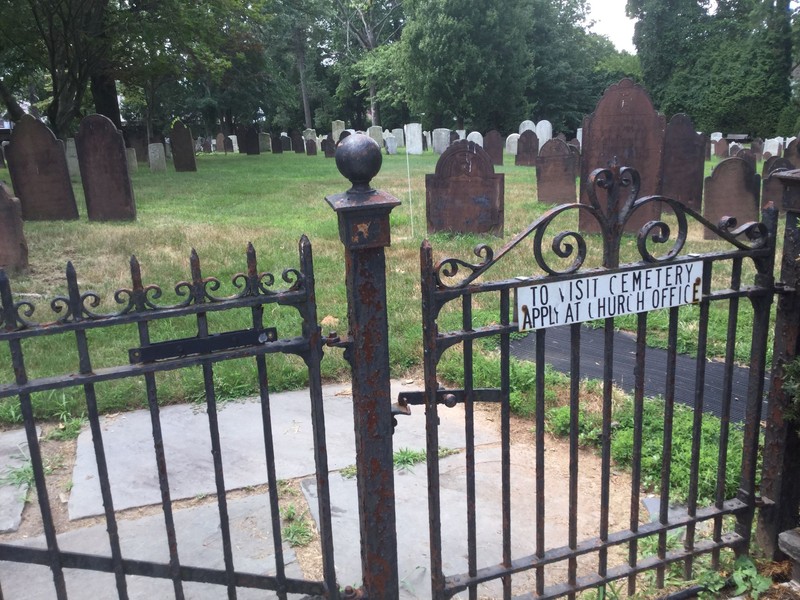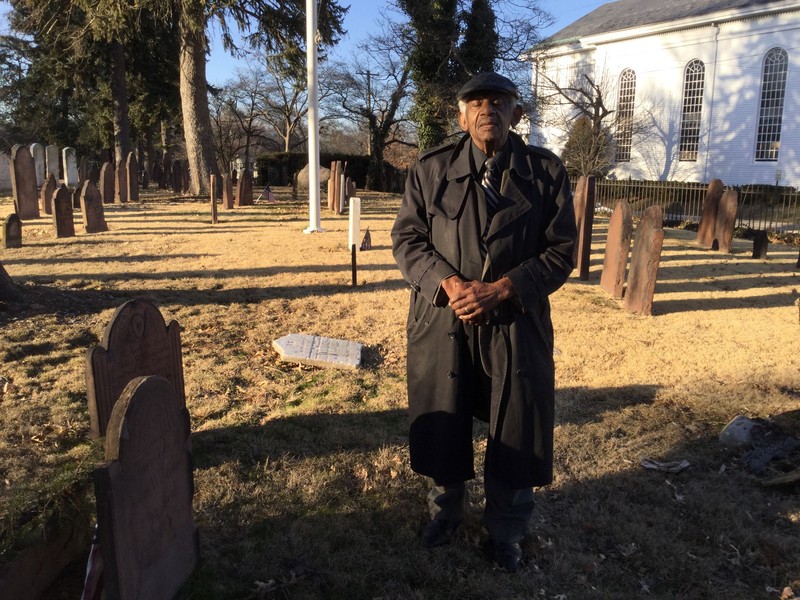Burial Grounds of the Presbyterian Church
Introduction
Text-to-speech Audio
Images
Burial Grounds of the Presbyterian Church Plaque

Entry gate to the Burial Grounds

L. Wallace Brown visiting the site he remembers as his grandmother's grave.

Backstory and Context
Text-to-speech Audio
Historian Charles Philhower notes that there was a considerable slave trade in the 1720s, as well as in the decades that followed, and that most families in Westfield owned at least one enslaved person. During the late 18th century there were fourteen houses in town, along with a Blacksmith shop, a shoe shop, a school, and a church. As of the 1780 census there were 25 slaves in Westfield.
Although no markers have been found that identify African American burial locations in this cemetery, L. Wallace Brown, an African American man born in Westfield in 1931 remembers visiting his grandmother’s grave here, which did not have a grave stone. Mr. Brown’s family bible traces his ancestors back to Lemby Williams, who was born in 1792 and was a member of the Presbyterian Church, and John C. Williams, who was born in 1795. Remarkably, Mr. Brown is a living representative of very early African American residents of our town who trace their lineage to colonial times.
Rev. Woodruff, minister of the Presbyterian Church during this early period, was buried in the cemetery where you are standing. He owned slaves and married off one of his slaves to an enslaved person owned by Dr. Elmer, also of Westfield. Recent research (Spring 2020) of the records of the Presbyterian Church indicates possible, but not definitive, evidence that six African Americans are buried with stones at the cemetery. There is a higher probability that a seventh grave, that of Walter DeCamp, who died in 1802, is that of an African American man.
It is likely that some of the African American residents who lived in Westfield from the beginning of the town's history may have arrived from African directly (until 1786 when the importation of slaves was illegal), and therefore may not have spoken English. The African American enslaved people brought with them to the colonies Black eyed peas, okra, peanuts, and other foods. They introduced deep frying, smokey ingredients, gumbos, and leafy greens, as well as the use of nuts and seeds as thickeners, as reported by the Miller Cory House Museum.
Cite This Entry
African American History Committee of Westfield, NJ, . "Burial Grounds of the Presbyterian Church." Clio: Your Guide to History. October 22, 2020. Accessed April 2, 2025. https://theclio.com/tour/1585/1
Sources
Colonial Westfield Past and Present, compiled under the auspices of the Westfield Tercentenary Committee, available as a pdf at: http://www.digifind-it.com/westfield/home.php (select: Colonial Westfield Past and Present).
Honeyman, A. Van Doren, History of Union County New Jersey, 1664-1923, Vol. II, Lewis Historical Publishing Co., 1923.
Official Program, Two Hundredth Anniversary of Settlement of Westfield, 1920.
Philhower, Charles A., History of Town of Westfield, Union County, New Jersey (Lewis Historical Publishing Co. 1923), available online at: http://www.digifind-it.com/westfield/home.php (select: History of Town Westfield (Charles Philhower).
Smith, Geneva, “Legislating Slavery in New Jersey,” Princeton & Slavery Project, available at https://slavery.princeton.edu/stories/legislating-slavery-in-new-jersey.
L. Wallace Brown, oral history, personal archive.
Elisa Sananman
Elisa Sananman
Elisa Sananman

